 |
| Temple of Bhutan, Bodh Gaya |
 |
| Temple of Japan, Bodh Gaya |
 |
| Temple of Tibet, Bodh Gaya |
 |
| Temple of Thailand, Bodh Gaya |
Where to Stay
Where to Stay
“It is better to travel well than to arrive” – Buddha
Travel Authentic Cultural India
 |
| Temple of Bhutan, Bodh Gaya |
 |
| Temple of Japan, Bodh Gaya |
 |
| Temple of Tibet, Bodh Gaya |
 |
| Temple of Thailand, Bodh Gaya |
Where to Stay
“It is better to travel well than to arrive” – Buddha
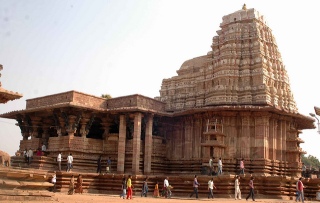 |
| Ramlingeshwara Temple, Ramappa |
 |
| Thousand Pillar Temple |
 |
| Ramappa Lake |
 |
| Kakatiya Rock Garden |
 |
| Bhadrakali Temple |
 |
| Medak Fort |
 |
| Sri Vidya Saraswati Temple, Wargal |
 |
| Medak Church |
 |
| Goddess Kanakdurga Temple, Edupayalu |
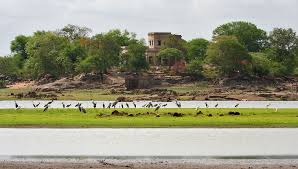 |
| Pocharam Wildlife Sanctuary |
 |
| Gottam Gutta, Zaheerabad |
 |
| Sri Laxmi Narsimha Swami Temple, Dhrampuri |
 |
| Kondagattu Anjaneya Swami Temple |
 |
| Sri Raja Rajeswara Temple, Velumawada |
| Bommalamma Gutta, Gangadhara |
 |
| Mukteshwar Swami, Kaleshwaram |
Where to Stay
Mahabubnagar is the largest district in Telangana in terms of area covered. It had been formerly known as Rukmammapeta and Palamooru. It is said that famous Golconda diamonds including the famous Koh-i-noor diamond came from Mahabubnagar District. There are number of places of worship in and around Mahabubnagar town.
 |
Chaturbhuj Temple: It is very interesting example of Rock cut Architecture and it is belonged to 9th Century. t has a garbha-griha (sanctum) and a mukha-mandapa (portico) supported on four pillars in front. These pillars are designed in characteristic chain-and-bell motif with full vase at bottom and top. The sanctum is a 12 feet square room and portico is 10 feet by 9 feet in measurement. River goddesses, Ganga and Yamuna, are present on the sanctum door jambs riding on their respective mounts, makara and kachchapa (tortoise).According to first inscription, the temple was bulit during the reign of Pratihara ruler, Adivarah Bhojdev.
 Man Mandir Palace: It is one of the most bravura monument of Rajput architecture built by Raja Man Singh Tomar between the period of 1486 and 1571. Many of the lavishly decorated features still exist. Stone latticework lines battlement tops feeding into rounded bastions topped with cupolas all decorated with coloured tile work. The brilliant blue tiles outshine what remains of the yellow and green colours still mesmerizing against the pale stone façade. Artwork within the tiles intertwines with beautifully carved stone creating a richly unique exterior leaving imaginations to run wild about the grandeur of years past. Palace houses many rooms, vast chambers, galleries and verandah ornamented with beautiful carving and colourful tiles.
Man Mandir Palace: It is one of the most bravura monument of Rajput architecture built by Raja Man Singh Tomar between the period of 1486 and 1571. Many of the lavishly decorated features still exist. Stone latticework lines battlement tops feeding into rounded bastions topped with cupolas all decorated with coloured tile work. The brilliant blue tiles outshine what remains of the yellow and green colours still mesmerizing against the pale stone façade. Artwork within the tiles intertwines with beautifully carved stone creating a richly unique exterior leaving imaginations to run wild about the grandeur of years past. Palace houses many rooms, vast chambers, galleries and verandah ornamented with beautiful carving and colourful tiles.
Teli ka Mandir: It is the loftiest of all the existing buildings in the fort nearly over 100 feet in height. It belongs to 8th Century Pratihar Dynasty temple of Shiva or Vishnu. The form of roof is Dravidian, while the decorative details have all Indo-Aryan characteristics of Northern India. It is thus an interesting example of temple architecture where both the Dravidian and Indo-Aryan styles meet known as Valabhi style of temple architecture. Some other stories are related to that It was built as common place for buyers and seller of oil merchant who come to the city from the various part of the India for trading and those days there were no permanent market set-up.
Sas-Bahu ka Mandir: It is also known as Sahastrabahu Temple situated on Gwalior Fort built in the year 1092 by King Mahipal of Kachchhapaghata (Kachchhwaha) dynasty. The twin structures temples denoted to Lord Vishnu. This artistic piece of architecture not only fascinates the devotees but also the tourists. Both of these temples are adjacent to each other and are extravagantly decorated with beautiful carvings and sculptures. The roof of the larger temple id adorned with a marvellous lotus carving which attracts tourists and beauty admirer.
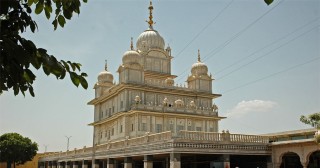
Gurudwara Sri Data Bandi Chhod Sahib:It is situated on the hill top in the Gwalior Fort associated with the imprisonment of Guru Har Gobind Sahib in Gwalior Fort and his celebrated release in which he managed to win the freedom of 52 Rajas (Kings) who had long suffered imprisonment in the Fort by Mughal Emperor Jehangir. The word “Bandi” means “imprisoned”, “Chhor” means “release”.
Assi Khamba ki Baori: Assi Khamba ki Baori is the ancient monument in the Gwalior Fort in front of Man Mandir Palace and was built by Maharaja Man Singh Tomar. This ancient monument consists of different chambers which were made for the Queens to bathe. It has 80 pillars and hence is called as Assi Khamba ki Baori. Musical concerts were also organized here.
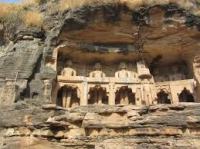
Jain Rock-Cut Sculptures: A striking part of the Jain remains at Gwalior is a series of caves or rock-cut sculptures, excavated in the rock on all sides and more than hundred in numbers. According to inscriptions, they were excavated between 13th to 15th Century A.D. during Rajput Rule. You can find some similar Jain sculptures or worship place on opposite side of Fort that is Gopachal Parvat. ‘Ek Patthar ki Baori’ is also situated in this part of fort.
Gujari Mahal: It is situated within the premises of Gwalior Fort. Gujari Mahal was built by Raja Man Singh Tomar for his Gujar Queen Mrignayani. It is one of the most beautiful symbol and love and affection. The outer structure of the Gujari Mahal has survived in an almost total state of preservation while the interior has been converted into an Archeological Museum in houses rare antiques, some of them dating back to the 1st century A.D. Particularly, worth seeing is the statue of Shalbhanjka from Gyraspur, the tree goddess, epitome of perfection in miniature. ‘Shalbhanjika’ refers to the sculpture of a woman, displaying stylised feminine features. It is a Sanskrit term means ‘breaking a branch of sala tree’.
Jai Vilas Palace: One of the eyes soothing monument architecture by Sir Michael Filose, designed on the plan of an Italian Plazzo is worth visiting. The construction of Palace distinct in three styles of architecture, the ground floor represents Tuscan style, the first floor depicts the Italian design and the top most floors depict the Corinthian style. It’s Darbar Hall along with eye catching treasures including a silver train with cut glass wagons serving guests as it chugged around on miniature rails on the tables; a glass cradle from Italy, Mughal carpets, Swords of Aurangzeb and Shah Jahan etc.

Chhattris of Scindia Dynasty: It is situated on the Theme Road and famous Maharani Laxmi Bai College. It is a cremation place for the Scindia Family who rules city for many years. Designated personalities like His Highness Madhavrao Scindia, Her Highness Vijayaraje Scindia and His highness Jiwajirao Scindia were cremated here. Some similar types of Chhatris you can find in Shivpuri City also which is 120 km from Gwalior city.
Maharani of Jhansi Memorial: During ‘First war of Independence-1857’ Maharani Lakshmi Bai got surrounded by British Army and having no chance of survival, she is said to have died of her wounds at this very place after she jumped off the Gwalior Fort with her horse. The memorial is dedicated to her. It is situated on Phool Bagh in Gwalior city. 
Tomb of Gaus Mohammad: The great Sufi saint Hazrat Mohammad Gaus or Gaus Mohammad Gwaliori’s tomb is situated at Hazira and was built by Mughal Emperor Akbar. Gaus Mohammad was one of the noteworthy Sufi in the history of India. Mohammad Gaus has written many books in which “Gulzare Abraar” is the most famous. His tomb was built with fine curved sandstone; the tomb is a beautiful piece of early Mughal architecture. 
Maharaja Bada: ‘Heart of the city’ Maharaj Bada is the biggest and important market place of Gwalior. Seven ancient building of different styles of architecture can be viewed. It is also known as Jiwaji Chowk. In the surroundings of Maharaj Bada, the govt. Press, Victoria Market, Gorkhi Palace, Gorkhi Palace, Regal Talkies (Opera House), Post Office, Municipal Office and State Bank of India situated. It is a best place for shopping. Nearby places around Maharaj Bada for shopping and eating are Sarafa Bazar, Gandhi Market, Subhash Market, Daulat Ganj, Madhav Ganj, etc
Sun Temple: The Sun Temple is a facsimile of the famous Sun Temple of Konarka, Odisha and now this Sun Temple is one among the significant pilgrimage centers in Gwalior. It was constructed by Shri G.D Birla (a famous industrialist of India) in the year 1988. It is situated in Morar area of Gwalior and famous for cleanness and beautiful gardens.
Where to stay: All categories of hotel are available in city like Taj Usha Kiran Palace, MK Vivanta, Hotel Central Park, Hotel Landmark, etc
When to visit: October to March is the best time to visit Gwalior.
How to Reach: Airway: Gwalior is connected with Mumbai and Delhi
Railway: Connected with almost all big cities of India.
Roadway: Buses are available for all major cities of North and Central India.
If you have any query regarding Gwalior, Feel free to connect
Thank You
‘Travel More Explore More’
“One Billion Tourists, One Billion Opportunities”
It’s Not just an statement, but a campaign. It’s about Making ”Better Places for people to live, and better places for people to visit”.
Here We are going to tell our fellow traveller ‘How they can travel responsible and create opportunities for others’
Points that can help you for travel in a better way:
1. Always prefer to visit for Alternative Tourism Destinations instead of Mass Tourism Destinations.
2. Always use Local Transport system instead of your personal vehicle.
3. Always stay with locals or prefer homestays instead of Hotels or Resorts.
4 Always try Local cuisines which gives you the Real taste of Destination’s culture.
5 Always Respect Local Culture. No matter you like it or not.
6 Try to save energy, Remember ‘Unplug Before You Leave’.
7 Save Water: Do not waste water while shaving, brushing or washing.
8 Do Not throw plastic or garbage anywhere, but in the right place i.e. Dustbin
9 Protect Cultural and Natural Heritage
10 Always Buy from locals So they can get opportunity earn from it.
After travelling some we reached a place which is known for Bird Watching. It was an amazing place where you can see the beauty of nature and click photos.
 |
| Laxman Temple at Sirpur |
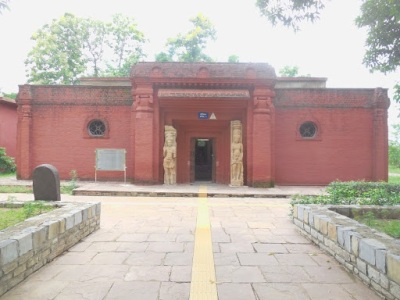 |
| Museum at Laxman Temple, Sirpur |
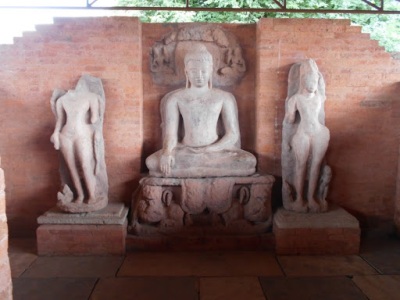 |
| Statue of Lord Buddha at Teevardev Maha Vihara |
 |
| Shiva Temple Complex |
Surang Tila, Sirpur
After click lot of photos we moved to our next and final destination of the day i.e. Gandheswar Temple. It is Lord Shiva temple and very famous in surrounding regions situated on the bank of River Mahanadi and consist of other amazing structures, which was collected by locals and people all worshipped them.
After taking breakfast at Huieng Tsang Resort, We left for our dream destination region i.e. Bastar. We took NH43. By Leaving Sirpur we drive through Naya Raipur and stopped for a Coffee at the outskirts of Dhamtari (District between Kanker and Raipur)
 |
| Royal Palace of Kanker |
Our next stop was Kanker Royal Palace (Now it is Heritage Hotel), we were welcomed by MaharajKumar Ashwini Pratap Deo (Jay Ji).He was very excellent personality and down to earth. He personally guided us to his Royal palace and permitted us to click photos. He also brief about Kanker’s Royal History.
 |
|
Luxury Tents at Dandami Resort.
Chitrakote Waterfall
|
Beautiful morning from the Bank of Chitrakote Waterfall. It is also known as ‘Niagara Falls of India’. This waterfall was on the River Indravati and falls from the height of 95 feet. And It creates a House-shoe type structure and U shaped structure. And it is amazingly beautiful in Monsoon period
 |
| Chitrakote Waterfall |
We were accompanied by ‘Encyclopaedia of Bastar’ Mr. Awesh Ali. He guided us about each and every basic thing about Bastar and cleared our doubts. We reached Barsur at 12:00 noon visited Mammoth Statue of Twin Ganesha Temple, Mama Bhanja temple and Battisa Temple etc All temples has its history and related story.
 |
| Mama Bhanja Temple |
Twin Ganesha Temple (Right)
 |
| Battisa Temple, Barsur |
 |
| Danteshwari Temple, Dantewara |
Local Haat Bazaar is local market for rural where they shopping. We tried Mahua (Local Beer) and Landa ‘Rice Drink’
 |
| Cock Fight during Haat Bazaar |
 |
| Bastar Wall Paintings |
 |
| Anthropological Museum, Jagdalpur |
 |
| Bastar Souvenir Time |
Recent Comments